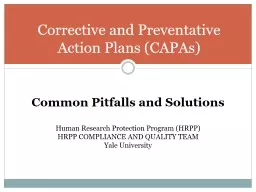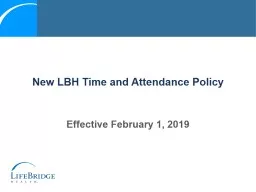PPT-Corrective and Preventative Action Plans (CAPAs)
Author : imetant | Published Date : 2020-08-29
Common Pitfalls and Solutions Human Research Protection Program HRPP HRPP COMPLIANCE AND QUALITY TEAM Yale University Preventing DeviationsNoncompliance in the
Presentation Embed Code
Download Presentation
Download Presentation The PPT/PDF document "Corrective and Preventative Action Plans..." is the property of its rightful owner. Permission is granted to download and print the materials on this website for personal, non-commercial use only, and to display it on your personal computer provided you do not modify the materials and that you retain all copyright notices contained in the materials. By downloading content from our website, you accept the terms of this agreement.
Corrective and Preventative Action Plans (CAPAs): Transcript
Download Rules Of Document
"Corrective and Preventative Action Plans (CAPAs)"The content belongs to its owner. You may download and print it for personal use, without modification, and keep all copyright notices. By downloading, you agree to these terms.
Related Documents














